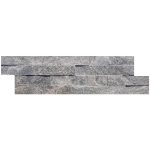mosaic tile
In the world of architecture and construction, the use of stone has always been synonymous with strength, durability, and timelessness. From ancient civilizations to modern skyscrapers, the beauty and functionality of natural stone have been revered for centuries. However, with the advancement of technology and the growing demand for sustainable building materials, a new player has emerged in the world of construction - urban cultured stone.
Urban cultured stone, also known as manufactured stone veneer or faux stone, is a man-made product designed to replicate the appearance of natural stone. Made from a mixture of cement, aggregates, and iron oxide pigments, urban cultured stone is molded and colored to resemble various types of natural stone, such as limestone, slate, and granite. The result is a lightweight, versatile, and cost-effective alternative to traditional stone that has gained popularity in both residential and commercial construction projects.
Evolution of Urban Cultured Stone
The concept of using manufactured stone as a building material can be traced back to the early 20th century when artisans and craftsmen began experimenting with different techniques to create artificial stone. These early attempts were often crude and lacked the sophistication and quality of modern urban cultured stone. However, as technology and manufacturing processes improved, the production of urban cultured stone became more refined and efficient.
One of the key developments in the evolution of urban cultured stone was the introduction of lightweight aggregates and polymers into the manufacturing process. These materials not only reduced the weight of the finished product but also increased its strength and durability. As a result, urban cultured stone became a viable alternative to natural stone for a wide range of applications, including exterior cladding, accent walls, and fireplace surrounds.
In addition to advancements in materials, the design and manufacturing techniques used to create urban cultured stone have also evolved over time. Today, manufacturers have the ability to replicate the intricate textures, colors, and patterns found in natural stone with remarkable accuracy. This level of detail and realism has made urban cultured stone indistinguishable from natural stone to the untrained eye, allowing architects and designers to achieve the look they desire without the high cost and logistical challenges associated with using natural stone.
Benefits of Urban Cultured Stone
The growing popularity of urban cultured stone in modern architecture can be attributed to a variety of factors, including its numerous benefits compared to natural stone. Some of the key advantages of using urban cultured stone in construction projects include:
1. Cost-Effectiveness: Urban cultured stone is typically more affordable than natural stone, making it an attractive option for budget-conscious projects. The lower cost of materials and installation can result in significant savings for builders and homeowners without sacrificing the aesthetic appeal of the finished product.
2. Lightweight and Easy to Install: Urban cultured stone is lightweight and easy to work with, making it ideal for both new construction and renovation projects. Its manageable size and weight allow for quick and efficient installation, reducing labor costs and construction time.
3. Variety of Styles and Colors: Urban cultured stone is available in a wide range of styles, colors, and textures, giving architects and designers the flexibility to create custom looks for their projects. Whether seeking a rustic, traditional, or contemporary aesthetic, there is a cultured stone option to suit any design vision.
4. Durability and Weather Resistance: Manufactured stone veneer is engineered to withstand the elements, including extreme temperatures, moisture, and UV exposure. Its durable composition ensures long-lasting performance and minimal maintenance requirements, making it an ideal choice for exterior applications.
5. Sustainable and Eco-Friendly: Urban cultured stone is a sustainable building material that minimizes waste and environmental impact. By using recycled materials and reducing the need for quarrying natural stone, cultured stone contributes to a more eco-friendly construction industry.
Impact of Urban Cultured Stone on Modern Architecture
The rise of urban cultured stone has had a significant impact on modern architecture and design. Its versatility, affordability, and aesthetic appeal have made it a popular choice for a wide range of projects, from residential homes to commercial buildings. Some of the key ways in which urban cultured stone has influenced modern architecture include:
1. Facade Enhancement: Urban cultured stone is commonly used as a facade material to enhance the exterior appearance of buildings. Its ability to replicate the look of natural stone adds texture, depth, and visual interest to facades, creating a striking first impression for visitors and passersby.
2. Interior Design Applications: In addition to exterior cladding, urban cultured stone is also used extensively in interior design applications. From accent walls and fireplace surrounds to kitchen backsplashes and bathroom vanities, cultured stone adds a touch of luxury and sophistication to indoor spaces.
3. Historical Replication: Urban cultured stone has become a popular choice for historical preservation and restoration projects. Its ability to mimic the appearance of traditional stone allows architects and builders to maintain the historical integrity of older structures while improving their durability and longevity.
4. Sustainable Construction: As the construction industry continues to prioritize sustainability and eco-friendliness, urban cultured stone has emerged as a preferred building material. Its low environmental impact, energy-efficient production process, and recyclable components make it a sustainable choice for green building projects.
5. Design Flexibility: Urban cultured stone offers architects and designers a high degree of design flexibility, allowing them to realize their creative vision with ease. Whether creating a rustic mountain retreat or a sleek urban loft, cultured stone can be customized to achieve the desired aesthetic effect.

Conclusion
Urban cultured stone has become a staple in modern architecture, offering a cost-effective, durable, and aesthetically pleasing alternative to natural stone. Its evolution from early experimental techniques to sophisticated manufacturing processes has transformed the way architects and builders approach construction projects. With its versatility, sustainability, and design flexibility, urban cultured stone is poised to remain a popular choice in the construction industry for years to come.
